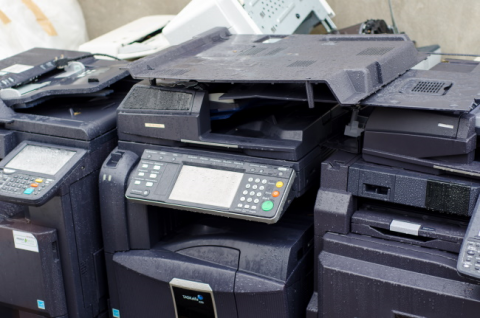“If it ain’t broke, don’t fix it” shouldn’t apply to your printer fleet. While it may seem like you’re saving money by keeping legacy print technology because it’s still working, there are consequences, including financial ones.

While you are avoiding the capital investment of buying a new printer fleet, legacy print technology continues to be barrier to productivity, collaboration, efficiency and security, which means you may be losing more money indirectly in the long run.
The burdens of legacy print technology
No office has gone completely paperless, that’s why every business still has a printer fleet. But even if your older devices are still printing paper for employees, they can be a hassle for the IT department that has to maintain them.
Older devices are likely to break down more frequently, which means you’re pulling IT resources away from strategic projects for frequent break / fix incidents such print jams and toner shortages. An older printer fleet can also be more difficult to support because of software compatibility issues, which will be magnified if you’re upgrading your workstations at a faster pace.
In the meantime, productivity is down since employees can’t print as easily as they’d like because these older printers have slower outputs in terms of pages per minute—employees who want to print on the fly just before a meeting may end up being late because they’re waiting for their documents. If it’s an important business meeting, users also want documents to look good, and aging devices often can’t print high quality documents, even they are working to specifications.
Older devices are also less energy efficient, which means you’re wasting money with higher electricity bills that could be avoided, and not achieving sustainability targets. Ultimately, you may think you’re saving money by not investing in a new printer fleet but avoiding this capital expense means your operational expenses are higher.
Your printer fleet must be secure
Legacy print technology also poses substantial security risks because even today’s older devices still deployed offices today are on the corporate network. An older print fleet is rarely on the radar as a security concern and it means adequate precautions aren’t taken, making them a ripe target for hackers to use as a doorway into the organization’s corporate network to reek havoc and threaten critical business information.
Given the rise of privacy legislation such as the General Data Protection Regulation (GDPR) and regulations specific to industries such as healthcare and banking regarding data governance and security, organizations need to consider all potential attack surfaces, especially legacy print technology.
Why it’s time for a refresh
Legacy print technology is not saving you money, even if it’s still working most days. Printer fleet breakdowns, high power consumption and slow output has impact on your budget, efficiency, productivity, sustainability while also posing a security risk. If you’re shying away from the capital expense of a new printer fleet, a managed print services provider can show you how replacing legacy print technology will pay off in the long run.
RJ Sahi is practice manager for PrinterLogix.
